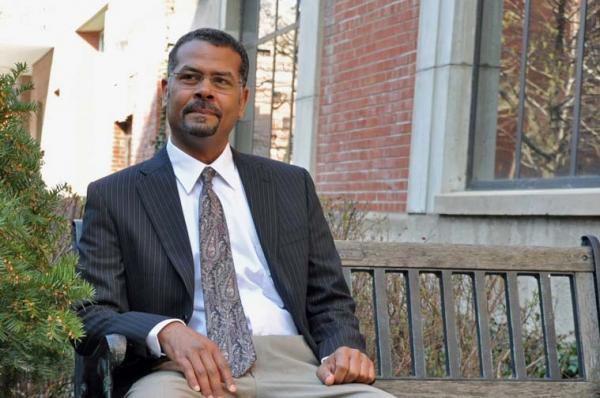
Award-winning teacher Abdel-Khalig Ali
Published: January 24, 2013
Abdel-Khalig Ali, of the Department of Near & Middle Eastern Civilizations, is one of five members of the Faculty of Arts & Science to receive an Outstanding Teacher Award in 2012. The awards, established in 1993, are based on nominations by peers and students.
Ali, who joined the Faculty in 2005, was recognized for transforming the Arabic language program and sparking a dramatic increase in enrolment. Highly rated by his students, Ali has incorporated e-learning aids and resources and created a modern Arabic workbook for students that he is currently developing into a textbook — one that promises to become the standard in the field.
I love teaching. Without fail, every year there is at least one student who makes me think twice about what I think I know and inspires me to improve how I teach. I’m looking to get an idea across in the best way I can, and the way I can assess my success or failure is by looking at the cases where I didn’t get it across, where I thought, “Ah, I never thought you’d understand it that way.” And that’s what I work on next. It’s a cumulative thing.
Poetry is one of the best ways to appreciate a language. Even with some languages that I’ve studied just briefly, what I remember is the poetry because it establishes a connection with the language at a level that’s closer than reading a text or a novel. Naming my favourite work by an Arabic writer would be very difficult! But in English translation, Khalil Gibran’s The Prophet is very accessible and, I think, one of the best books of all time.
Right from the beginning, I tell students: don’t expect the Arabic language to behave in a certain way. Don’t expect the plural to be a suffix. Don’t expect the sentence to go in a certain way. Try to figure out what it is that the language does. For example, the way words are structured in Arabic is a source of difficulty for English speakers. At some point in the course I’ll say, what do you notice about the words maktaba (library), kitaab (book), kutub (books) and kaatib (writer)? They all have these sounds: k-t-b. And then I explain, we give them different shapes with different vowels around them rather than suffixes or prefixes, and that’s how Arabic works. That root k-t-b is unpronounceable, though it has a meaning– all the “ktb” words have to do with writing.
When you are learning a language, you’re learning a way of thinking. In English, we say “I have a book;” in Arabic, we say “a book is at me.” It’s not the same relationship between the book and myself. I don’t want to read too much into it, but it’s not just different ways that people express themselves; it’s a different way of thinking about the world.
U of T’s department of Near and Middle Eastern Civilizations used to teach only Classical Arabic. But now we offer varieties of the language, which gives students access to all of the Arabic-speaking world. Three levels of Arabic coexist: Classical, Modern Standard and regional varieties. The domain of Classical Arabic is religious texts, Muslim and Christian – no one speaks it as a mother tongue. Modern Standard Arabic is the standardized variety that’s taught at school. It’s the language used in newspapers, on the radio – in formal situations – and is what I was hired to teach. And the language that you learn as a child and use in everyday life is one of the dozens of spoken varieties – such as my own native language, Sudanese Arabic. Each of these shows influence from other languages that were spoken in those areas before Arabic arrived, such as Nubian in northern Sudan. This makes them very different. If you take someone from Morocco and someone from the Gulf, they will have to resort to Modern Standard to communicate.



